Introduction: The Legacy of Soccer’s Greatest Goal Scorers
Soccer’s all-time leading goal scorers represent the pinnacle of athletic excellence—players whose extraordinary talent, dedication, and consistency enabled them to achieve scoring feats that inspire generations. From Cristiano Ronaldo’s record-breaking 949 career goals to Lionel Messi’s remarkable 889 goals, these legendary athletes demonstrate what sustained excellence looks like at the highest levels of competition.
While professional soccer’s elite scorers capture global attention, schools and youth soccer programs around the world create their own goal-scoring legends—student-athletes whose achievements deserve recognition and celebration within their communities. This comprehensive guide explores both the historic achievements of soccer’s greatest scorers and practical approaches for schools to honor their own scoring champions through modern recognition programs.
Whether you’re celebrating a high school player who shattered your school’s scoring record or documenting your soccer program’s all-time statistical leaders, understanding how to properly recognize goal-scoring excellence strengthens athletic culture, inspires future players, and preserves important program history.
Soccer’s Greatest All-Time Scorers: Historic Achievements
Understanding the achievements of soccer’s legendary goal scorers provides context for recognizing excellence at all competitive levels.
The Modern Era’s Dominant Scorers
Cristiano Ronaldo: The All-Time Record Holder
According to data from messivsronaldo.app, Cristiano Ronaldo has scored 949 goals in 1,292 games throughout his career, maintaining a goals-per-game ratio of 0.73. His remarkable consistency includes:
- 178 penalty goals with an 84% conversion rate
- 259 career assists demonstrating playmaking ability beyond scoring
- Goals scored across multiple leagues and international competition
- Sustained excellence spanning over two decades of professional play
Ronaldo’s achievement represents not just exceptional talent, but extraordinary longevity and consistency maintained across different teams, leagues, and competitive environments.
Lionel Messi: Precision and Efficiency
Lionel Messi’s 889 career goals in 1,130 games reflect exceptional efficiency with a goals-per-game ratio of 0.79—the highest among elite all-time scorers. Key achievements include:
- Superior goals-per-game ratio demonstrating exceptional efficiency
- 399 career assists showcasing complete offensive capabilities
- 112 penalty goals with 78% conversion rate
- Consistent performance across different competitive levels
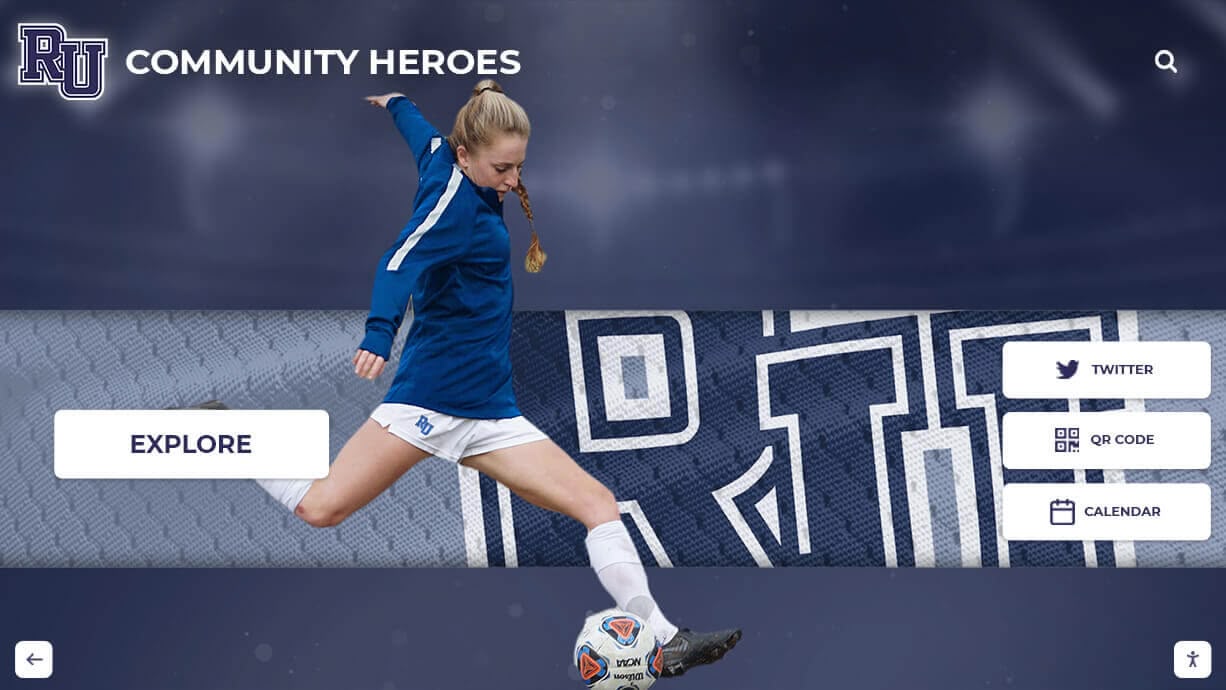
Modern digital recognition displays can showcase both professional achievements that inspire athletes and program-specific records that celebrate local excellence.
Historical Goal-Scoring Legends
The Debate Over Historical Records
Soccer’s historical scoring records involve considerable debate due to varying methodologies for counting goals. According to FIFA recognition in 2020, Josef Bican scored an estimated 805 goals playing between the 1930s and 1950s, though this figure includes goals from reserve teams and unofficial matches.
Pelé’s Legendary Status
Pelé claimed to have scored 1,279 goals throughout his career, though official competitive records show lower totals. Regardless of exact numbers, Pelé’s impact on soccer remains undisputed—the only player in history to win three FIFA World Cups and a global ambassador for the sport whose influence transcended statistics.
Other Historical Scoring Legends
Notable historical scorers who shaped soccer’s evolution include:
- Romário: Prolific Brazilian striker with over 750 career goals
- Gerd Müller: German legend known for clinical finishing and 735 career goals
- Ferenc Puskás: Hungarian icon whose scoring prowess earned legendary status
- Eusébio: Portuguese great combining power and precision
These historical figures demonstrate that goal-scoring excellence has defined soccer greatness throughout the sport’s history, creating a lineage of achievement connecting past legends to modern stars.
Why Recognizing Goal-Scoring Achievement Matters
Properly celebrating scoring excellence delivers significant benefits for athletic programs at all competitive levels.
Inspiring Current and Future Athletes
When young soccer players see comprehensive displays documenting their school’s all-time leading scorers—complete with photos, statistics, season highlights, and career information—abstract goals become concrete possibilities. A freshman viewing detailed profiles of players who scored 30+ goals in a season understands that exceptional achievement represents an attainable target rather than an impossible dream.
Goal-scoring records provide specific benchmarks that motivate training and development. Athletes understand exactly what statistical milestones they’re pursuing and can track their progress toward program records throughout their careers.
Solutions like digital record boards enable schools to showcase not just career totals, but season-by-season progressions that demonstrate how great scorers developed their skills over time.
Building Program Culture and Tradition
Documenting scoring excellence creates visible evidence of program standards and expectations. When athletes enter facilities and immediately encounter displays celebrating exceptional goal-scoring achievement, they understand they’re joining programs with established traditions of offensive excellence.
This tangible connection to program history strengthens athletic culture by:
- Establishing clear performance benchmarks defining program excellence
- Creating competitive motivation to pursue and break existing records
- Connecting current athletes to previous generations of successful players
- Demonstrating that exceptional achievement is part of program DNA
- Providing coaches with examples when teaching offensive concepts
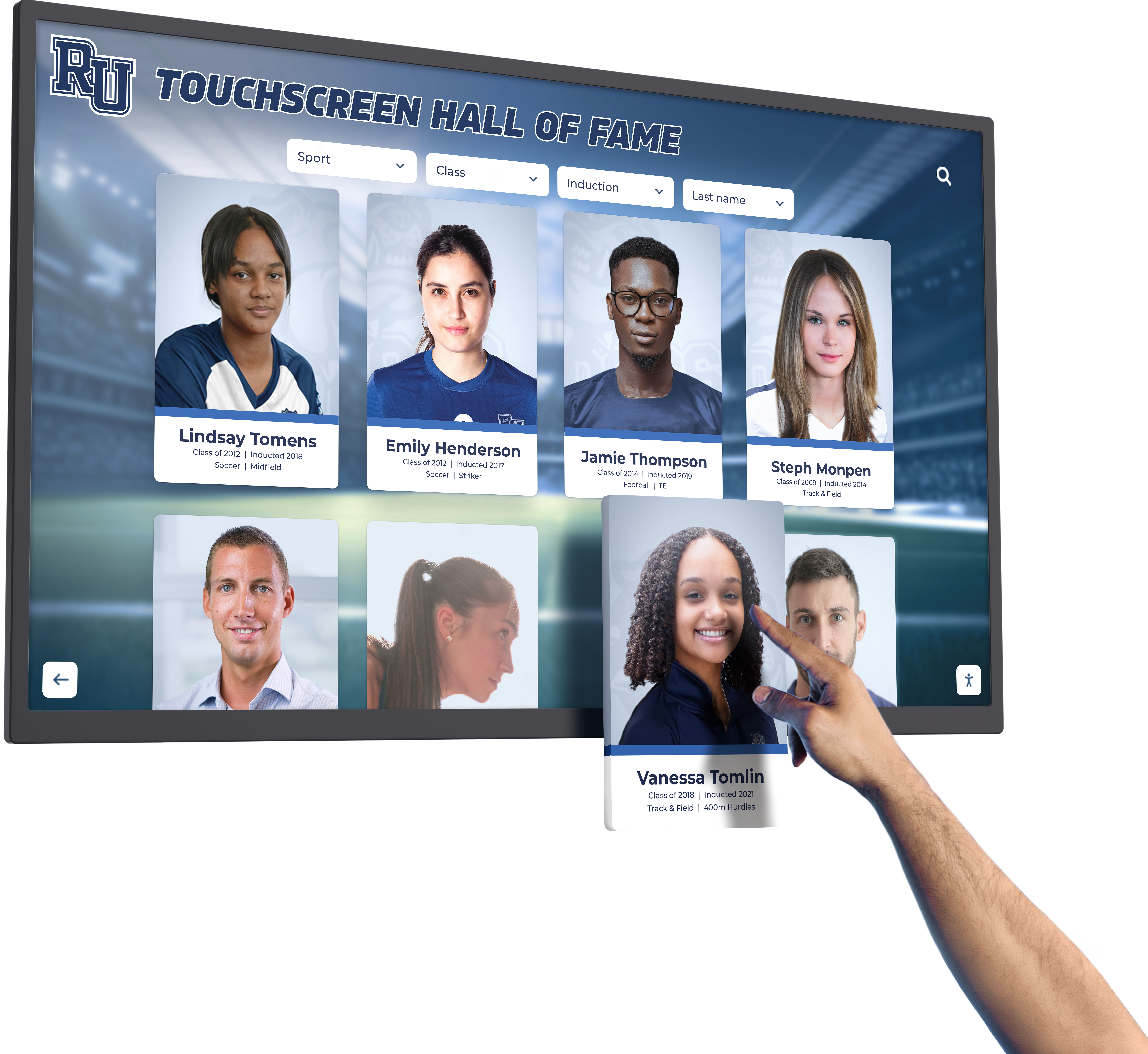
Interactive digital displays allow users to explore detailed statistics and player profiles, creating engaging experiences that strengthen connections to program history.
Supporting Recruitment and Program Development
Prospective athletes and their families evaluate soccer programs based on multiple factors—coaching quality, competitive level, facility standards, and demonstrated player development success. Comprehensive recognition of scoring achievement provides tangible evidence that programs develop prolific offensive players.
During campus tours and recruiting visits, athletic recognition displays become powerful recruiting tools. Recruits can explore how previous players at their position developed, review scoring progressions from freshman to senior seasons, and visualize their own potential development within the program.
Programs that systematically document and celebrate scoring excellence gain recruiting advantages by demonstrating:
- Proven track records developing offensive talent
- Systems and coaching that enable high-scoring output
- Commitment to recognizing and celebrating individual achievement
- Historical context showing sustained program quality over time
Preserving Program History and Legacy
Goal-scoring records represent important institutional history deserving permanent documentation. Decades from now, historians, alumni, and community members will seek information about players who achieved scoring excellence at your institution. Proper recognition ensures these achievements receive appropriate acknowledgment and accurate historical documentation.
Athletic legacies build cumulatively over time. Current scoring leaders add to traditions established by previous generations, creating narrative threads connecting past excellence to present achievement. Recognition displays make these historical connections visible, helping athletes understand their place within broader program histories.
Understanding Different Types of Soccer Scoring Records
Comprehensive recognition programs distinguish between various scoring achievement categories.
Career Scoring Records
Career Total Goals
The most fundamental scoring statistic tracks total goals scored throughout a player’s career with your program. Career totals reflect sustained excellence over multiple seasons and provide clear benchmarks for future players to pursue.
Effective career scoring recognition should include:
- Total career goals with season-by-season breakdown
- Games played and goals-per-game average
- Types of goals (headers, penalties, free kicks, open play)
- Competitive levels where goals were scored
- Career progression showing development trajectory
Career Points (Goals + Assists)
While goals represent primary offensive contribution, comprehensive recognition acknowledges complete offensive performance including assists. Career points totals (combining goals and assists) provide fuller pictures of players’ offensive impact.
This balanced approach recognizes that exceptional offensive players contribute through both scoring and creating opportunities for teammates, acknowledging complete attacking contributions rather than goals alone.
Single-Season Scoring Records
Most Goals in a Season
Single-season scoring records often represent peak performance during exceptional campaigns. These records may be broken more frequently than career totals but create memorable achievements celebrating outstanding individual seasons.
Season scoring records gain additional significance when contextualized with:
- Team performance and success during the record-setting season
- Strength of competition and schedule difficulty
- Goals in crucial games (playoffs, rivalry matches, championships)
- Other individual achievements during the same season
- Comparison to previous school records
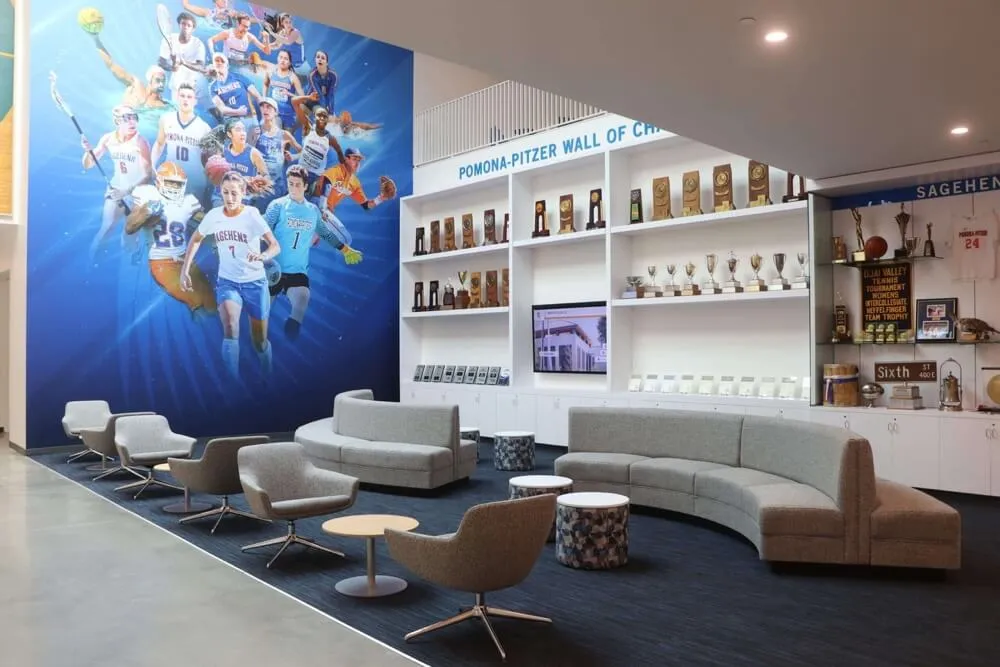
Modern recognition displays can combine individual scoring records with team achievements, showing how individual excellence contributed to program success.
Points in a Season
Similar to career totals, single-season points records acknowledge complete offensive contributions including both goals and assists. Season points records often differ from goal-scoring records, recognizing players whose playmaking abilities created significant value beyond personal scoring.
Game and Match Records
Most Goals in a Single Game
Individual game scoring records commemorate extraordinary single-game performances. Four-goal or five-goal games represent rare achievements worthy of permanent recognition alongside season and career records.
Consecutive Games With Goals
Goal-scoring streaks demonstrate remarkable consistency. Players who score in 8, 10, or 12+ consecutive games achieve milestones reflecting sustained excellence rather than isolated performances.
Fastest Goal Scored
Special recognition for unique achievements like fastest goal to open a game or fastest hat trick adds interesting historical details to scoring record archives.
Specialized Scoring Categories
Penalty Kick Conversion Rates
For players who regularly take penalty kicks, conversion percentages provide meaningful achievement metrics. Players who convert 85-90%+ of penalty attempts demonstrate exceptional composure under pressure.
Game-Winning Goals
Goals that directly determine game outcomes carry special significance. Career and season records for game-winning goals recognize clutch performance in critical moments.
Goals in Playoff/Tournament Competition
Distinguishing between regular season and playoff scoring acknowledges that goals in high-pressure tournament situations often carry additional significance.
Creating Comprehensive Soccer Scoring Recognition Programs
Schools can implement recognition systems celebrating goal-scoring excellence while inspiring future achievement.
Essential Content for Scoring Recognition Displays
Individual Scorer Profiles
Comprehensive profiles for all-time scoring leaders should include:
- Player name, years on team, and graduation year
- Career and season scoring statistics (goals, assists, points)
- High-quality action photos capturing playing style
- Jersey number and position information
- Individual awards and honors received
- Notable achievements and memorable goals
- Quotes from players about their experiences
- Post-high school career updates when available
Statistical Leaderboards and Rankings
Clear presentation of top performers across multiple categories:
- All-time career goals leaders (top 10-25 players)
- All-time career points leaders
- Single-season goals records by year
- Single-season points records
- Goals-per-game averages (minimum games qualifier)
- Game-winning goals leaders
Effective leaderboards balance recognizing historical excellence while leaving room for current athletes to join these prestigious lists, creating aspirational motivation.
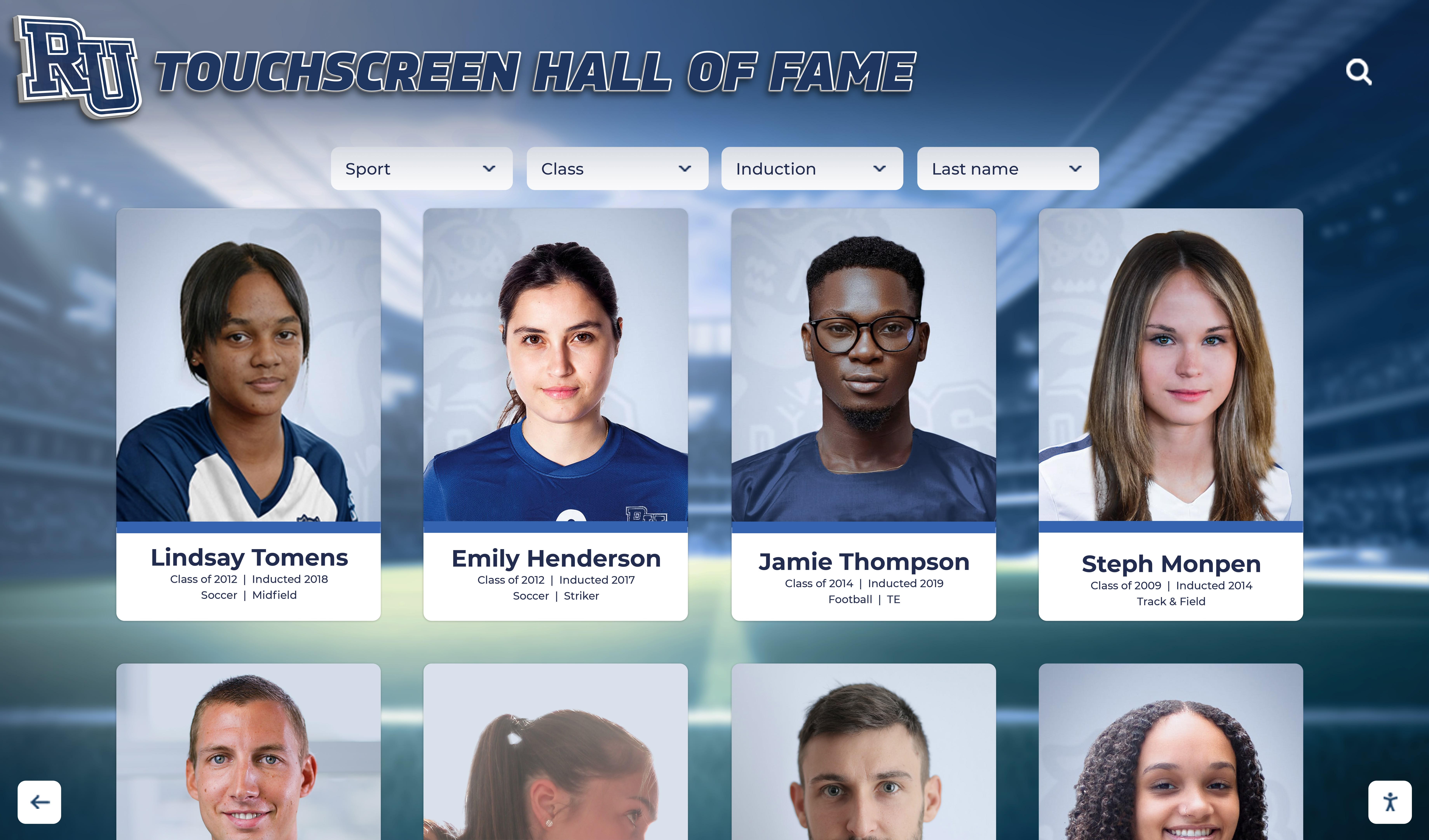
Digital platforms enable detailed athlete profiles that go far beyond what traditional static recognition boards can display.
Historical Context and Evolution
Scoring record recognition gains additional meaning through appropriate context:
- Program scoring records evolution over decades
- Comparison of scoring rates across different eras
- Offensive system changes affecting scoring opportunities
- Notable coaches during different scoring eras
- Team success correlation with individual scoring excellence
Season-by-Season Documentation
Rather than showing only career totals, document year-by-year progression:
- Freshman, sophomore, junior, senior season breakdowns
- Statistical development demonstrating improvement
- Context about each season (team record, championships, etc.)
- Memorable games and highlights from each year
This detailed documentation shows that scoring excellence develops through years of dedicated work rather than representing sudden talent bursts.
Traditional vs. Digital Recognition Approaches
Limitations of Traditional Physical Boards
Conventional recognition through painted wall boards or engraved plaques faces significant constraints:
- Finite Space: Limited wall space means difficult decisions about who receives recognition and how much detail to include
- Update Challenges: Modifying physical boards when records fall requires vendor involvement, creating delays and ongoing expenses
- Minimal Context: Static displays provide basic statistics without photos, narratives, or historical context
- Maintenance Issues: Physical boards degrade over time, requiring refinishing or replacement
- Limited Engagement: Passive displays don’t invite exploration or provide ways to discover additional information
Advantages of Digital Recognition Platforms
Modern digital recognition displays address traditional limitations while creating enhanced engagement:
- Unlimited Capacity: Recognition for unlimited numbers of athletes without space constraints
- Easy Updates: Content management systems enable immediate updates when records fall
- Rich Content: Photos, videos, detailed statistics, and biographical information
- Interactive Exploration: Search functionality and filtering enable personalized discovery
- Multiple Locations: Content accessible on physical displays and online platforms simultaneously
- Analytics: Usage data demonstrating engagement and identifying popular content
Implementation Strategies for Schools
Step 1: Historical Research and Documentation
Building comprehensive scoring archives requires systematic research:
- Review historical yearbooks and media guides
- Search newspaper archives for game reports and statistics
- Interview coaches with institutional memory
- Contact alumni to verify information and gather stories
- Digitize historical photos and documents
- Cross-reference sources to ensure statistical accuracy
For programs with decades of history, this research demands significant time investment but creates permanent institutional value.
Step 2: Establish Recognition Criteria
Define clear standards for inclusion:
- Minimum career goals threshold for all-time leaders list (e.g., 20+ goals)
- Qualification requirements for averages (e.g., minimum 30 games played)
- Single-season minimums for record consideration
- How to handle goals scored at different competitive levels
- Update procedures when records fall
Clear criteria ensure recognition remains fair and meaningful while maintaining standards of excellence.
Step 3: Content Development and Organization
Systematically create content following consistent templates:
- Standardized profile formats ensuring consistent presentation
- Photo quality standards and preferred image types
- Statistical verification processes
- Editorial review procedures for accuracy
- Content prioritization starting with recent and most significant achievements
Phased implementation enables launching with core content while building comprehensive archives over time.
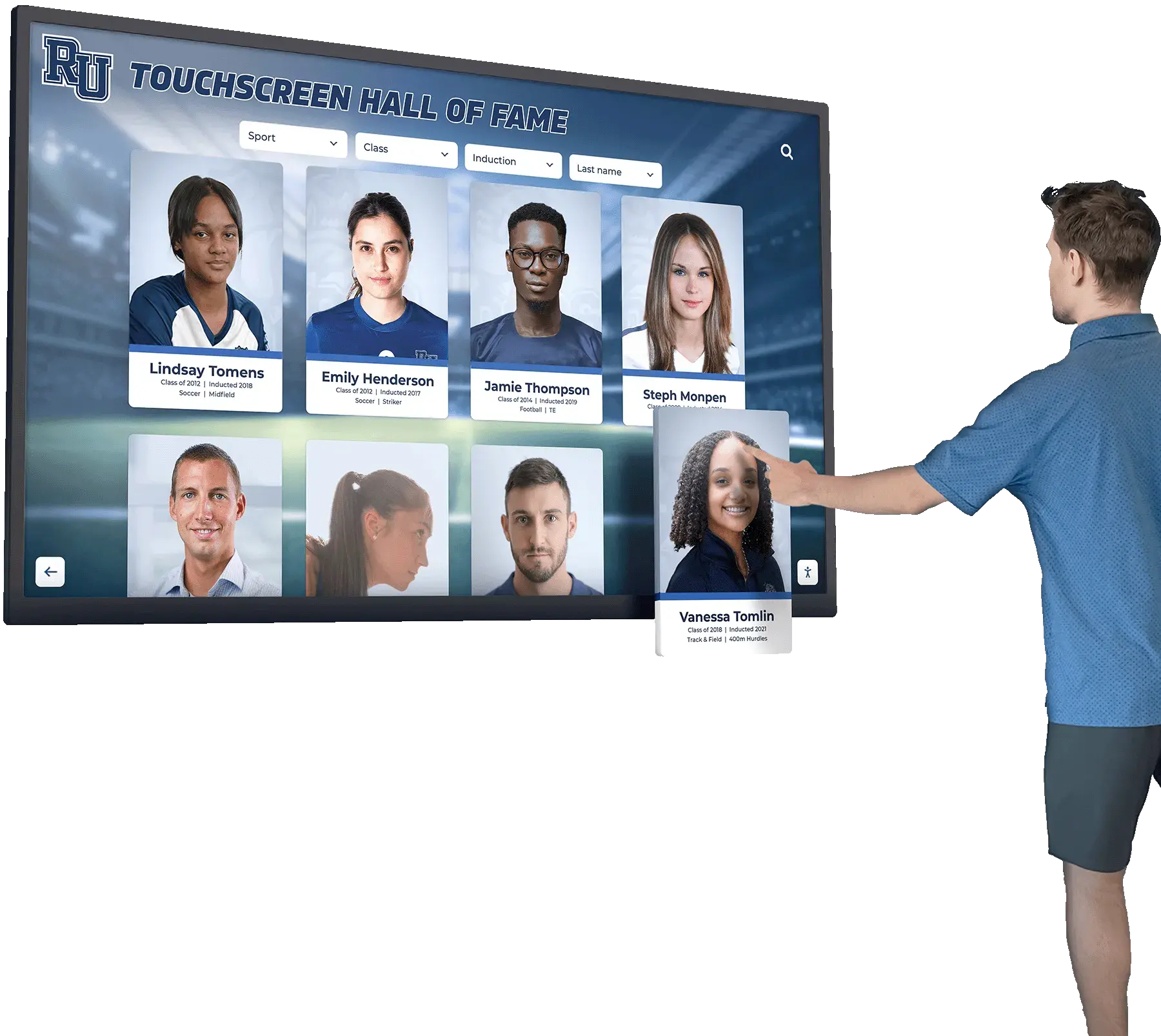
Intuitive touchscreen interfaces make it easy for athletes, alumni, and visitors to explore scoring records and player profiles.
Step 4: Technology Platform Selection
Choose recognition technology matching program needs and resources:
- Commercial-grade touchscreen displays for physical installations
- Content management systems enabling easy updates by staff
- Cloud-based platforms supporting both touchscreens and web access
- Search and filtering functionality for large databases
- Analytics tracking usage and engagement
- Mobile-responsive designs working across all devices
Purpose-built solutions like Rocket Alumni Solutions provide specialized features designed specifically for school athletic recognition that generic platforms cannot efficiently replicate.
Step 5: Ongoing Maintenance and Updates
Establish sustainable processes ensuring current information:
- Assign clear responsibility for content updates
- Create end-of-season workflows for adding new statistics
- Implement annual review cycles verifying accuracy
- Establish procedures for incorporating alumni updates
- Train multiple administrators preventing single-point failure
Recognition programs succeed long-term when maintenance becomes institutionalized through clear processes rather than depending on individual initiative.
Integrating Scoring Recognition with Broader Athletic Programs
Maximum impact comes from connecting scoring displays with comprehensive recognition strategies.
Multi-Sport Recognition Systems
Rather than creating soccer-specific isolated displays, integrate scoring recognition within comprehensive athletic recognition systems spanning all sports. Digital platforms accommodate this integration elegantly while enabling sport-specific filtering when desired.
Unified recognition systems create cohesive athletic department identities demonstrating that institutions value excellence across all programs equally. This inclusive approach builds department-wide culture rather than creating competition between sports for recognition resources.
Connecting Individual and Team Achievement
Effective displays show relationships between individual scoring excellence and team success:
- Highlight scoring leaders’ roles on championship teams
- Show how season scoring records correlated with playoff runs
- Connect career scoring achievements to overall program success during those years
- Demonstrate team-first mentality through assist totals and playmaking
This balanced approach celebrates individual excellence while reinforcing that soccer remains fundamentally a team sport where individual achievements contribute to collective success.
Supporting Player Development and Coaching
Scoring recognition can serve educational purposes beyond celebration:
- Show statistical progressions demonstrating development pathways
- Highlight diverse playing styles among top scorers
- Document different routes to scoring success (speed, technique, positioning, etc.)
- Provide coaching reference points when teaching offensive concepts
Resources about basketball records demonstrate how record-keeping systems apply across different sports while adapting to sport-specific considerations.
Creating Alumni Engagement Opportunities
Scoring recognition creates natural touchpoints for ongoing alumni connection:
- Reunion Programming: Feature specific graduating classes and their scoring leaders during reunions
- Update Submissions: Enable former athletes to submit career updates and professional accomplishments
- Record Anniversaries: Celebrate milestone anniversaries of significant scoring achievements
- Storytelling Opportunities: Collect narratives from record holders about memorable goals and seasons
These engagement strategies transform one-time recognition into ongoing relationships maintaining connections between alumni and athletic programs throughout their lives.
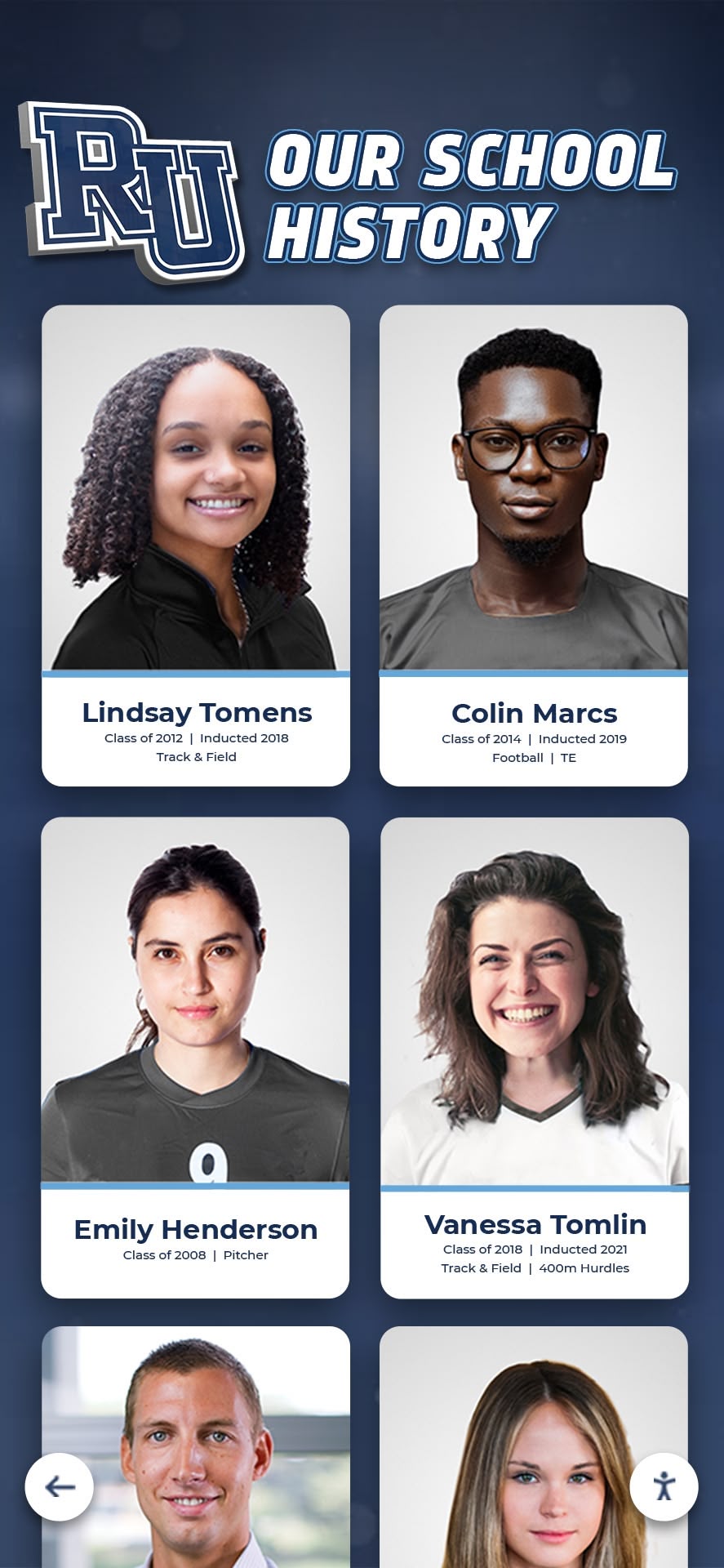
Comprehensive recognition preserves program history while creating opportunities for continued alumni engagement.
Best Practices for Soccer Scoring Recognition
Several key principles ensure recognition programs deliver maximum value.
Accuracy and Verification
Statistical accuracy forms the foundation of credible recognition programs. Implement verification processes:
- Cross-reference statistics from multiple sources when possible
- Acknowledge when historical records contain uncertainty
- Document sources for statistical claims
- Correct errors promptly when discovered
- Establish procedures for disputed statistics
Nothing undermines recognition credibility faster than obviously inaccurate statistics or careless errors in athlete names or achievements.
Inclusive Recognition Philosophy
While all-time leaders naturally receive prominent recognition, consider broader inclusion:
- Recognize season leaders even if career totals don’t reach all-time lists
- Acknowledge different achievement types (playmaking, defensive scoring, etc.)
- Celebrate improvement and development not just peak performance
- Include team context showing collective success alongside individual achievement
Inclusive approaches ensure recognition inspires all athletes rather than creating perception that only generational talents deserve acknowledgment.
Regular Updates and Maintenance
Recognition loses impact when displays contain obviously outdated information. Establish routines:
- End-of-season updates adding current year statistics
- Mid-season updates when records fall to maintain excitement
- Annual comprehensive reviews verifying accuracy
- Periodic content refreshes updating alumni career information
Cloud-based content management systems designed for schools simplify updates, enabling staff to maintain current content without technical expertise or vendor dependence.
Balancing Historical and Current Achievement
While honoring historical excellence remains important, ensure current athletes receive appropriate recognition:
- Highlight recent record-setters prominently
- Celebrate current season leaders even if they don’t break all-time records
- Show current athletes’ progress toward historical benchmarks
- Create special recognition when records that stood for decades fall
This balance demonstrates respect for program history while ensuring current athletes feel valued and recognized for their contributions.
Connecting Recognition to Program Values
Frame scoring recognition within broader program values and culture:
- Emphasize work ethic and development alongside natural talent
- Highlight academic achievement and citizenship alongside athletic excellence
- Show respect for opponents and officials through sportsmanship emphasis
- Demonstrate team-first attitudes through assist totals and team success context
Recognition programs that reinforce positive values create more meaningful impact than statistics presented without context.
Technology Solutions for Modern Soccer Recognition
Digital technology has transformed recognition capabilities, enabling sophisticated programs that traditional approaches cannot match.
Touchscreen Display Solutions
Interactive touchscreen displays create engaging experiences in athletic facilities:
- Search Functionality: Find specific players, years, or records instantly
- Filtering Options: View all-time leaders, single-season records, or specific eras
- Detailed Profiles: Access comprehensive information about each athlete
- Photo Galleries: Browse multiple images from players’ careers
- Video Integration: Watch highlight clips of memorable goals and performances
Commercial-grade touchscreens designed for continuous operation in high-traffic environments ensure reliable performance and longevity. Resources about interactive boards for student achievement provide additional guidance on selecting appropriate hardware.
Web-Based Recognition Platforms
Online platforms extend recognition beyond physical campus boundaries:
- Alumni anywhere can explore scoring records and player profiles
- Recruiting prospects research programs before campus visits
- Parents access information about program history and traditions
- Community members engage with athletic programs year-round
- Social sharing enables athletes to share recognition with networks
Web accessibility dramatically multiplies recognition reach and impact compared to physical displays accessible only to on-campus visitors.
Content Management Systems
Intuitive management systems empower staff to maintain current content:
- Template-based content creation requiring no technical expertise
- Drag-and-drop interfaces for uploading photos and documents
- Scheduled publishing for timing recognition announcements
- Version history enabling rollback if needed
- Role-based access controls for security
- Automated backups protecting against data loss
Schools should prioritize platforms designed specifically for educational recognition rather than adapting generic content management systems that lack essential sport-specific features.
Analytics and Engagement Measurement
Digital platforms provide usage data impossible with traditional recognition:
- Total interactions and viewing sessions
- Most-viewed players and popular content
- Search queries revealing user interests
- Peak usage times and seasonal patterns
- Geographic distribution of web platform users
- Average engagement duration per session
These analytics validate recognition investments while identifying which content resonates most strongly with audiences, informing future content development priorities.
Conclusion: Honoring Soccer Excellence Through Comprehensive Recognition
Soccer’s all-time leading goal scorers—from Cristiano Ronaldo and Lionel Messi at the professional pinnacle to student-athletes achieving excellence at high schools and youth programs worldwide—deserve recognition that matches the significance of their achievements. Goal-scoring excellence represents rare athletic accomplishment combining natural talent, technical skill, tactical intelligence, physical conditioning, mental toughness, and sustained dedication over multiple seasons.
Schools that effectively recognize scoring achievement accomplish multiple strategic objectives: they inspire current athletes by demonstrating that exceptional performance receives lasting acknowledgment, they strengthen athletic culture by establishing clear standards defining program excellence, they support recruiting by providing tangible evidence of player development success, they preserve program history documenting who achieved what and when, and they create alumni engagement opportunities maintaining connections throughout former athletes’ lives.
The evolution from traditional static recognition boards to modern digital platforms has dramatically expanded recognition possibilities. While painted wall boards and engraved plaques provide familiar tangibility, digital solutions offer unlimited capacity ensuring comprehensive recognition without space constraints, easy updates maintaining current information when records fall, rich multimedia content including photos, videos, and detailed statistics, interactive exploration enabling personalized discovery based on individual interests, web accessibility extending recognition beyond physical campus boundaries, and analytics demonstrating engagement through measurable data.
Successful scoring recognition requires systematic implementation addressing historical research documenting past achievements accurately, clear criteria establishing fair standards for inclusion, consistent content development following professional quality standards, appropriate technology selection matching program needs and resources, and sustainable maintenance processes ensuring long-term currency and accuracy.
Whether celebrating student-athletes who shattered school scoring records or documenting program statistical leaders across decades of competition, comprehensive recognition programs strengthen athletic culture while preserving important institutional history. The achievements of soccer’s greatest goal scorers—both legendary professionals and student-athletes excelling in school programs—deserve recognition that honors their excellence while inspiring future generations to pursue similar greatness.
Ready to create comprehensive recognition celebrating your soccer program’s all-time leading scorers? Contact Rocket Alumni Solutions to explore digital recognition systems designed specifically for schools, or discover more about digital trophy displays and athletic record-keeping solutions that celebrate achievement while building lasting athletic legacy.



































